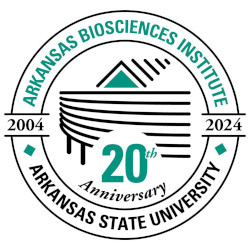Acidothermus cellulolyticus E1 endoglucanase expressed in planta undergoes extensive hydroxyproline-O-glycosylation and exhibits enhanced impact on biomass digestibility
Document Type
Article
Publication Title
Plant cell reports
PubMed ID
39073636
MeSH Headings (Medical Subject Headings)
Glycosylation; Cellulase (metabolism, genetics); Biomass; Nicotiana (genetics, metabolism); Plants, Genetically Modified; Hydroxyproline (metabolism); Cell Wall (metabolism); Cellulose (metabolism); Recombinant Proteins (metabolism, genetics); Caldicellulosiruptor (genetics, metabolism)
Abstract
E1 holoenzyme was extensively Hyp-O-glycosylated at the proline rich linker region in plants, which substantially increased the molecular size and improved the enzymatic digestibility of the biomass of transgenic plants. Thermophilic E1 endo-1,4-β-glucanase derived from Acidothermus cellulolyticus has been frequently expressed in planta to reconstruct the plant cell wall to overcome biomass recalcitrance. However, the expressed holoenzyme exhibited a larger molecular size (~ 100 kDa) than the theoretical one (57 kDa), possibly due to posttranslational modifications in the recombinant enzyme within plant cells. This study investigates the glycosylation of the E1 holoenzyme expressed in tobacco plants and determines its impact on enzyme activity and biomass digestibility. The E1 holoenzyme, E1 catalytic domain (E1cd) and E1 linker (E1Lk) were each expressed in tobacco plants and suspension cells. The accumulation of holoenzyme was 2.0- to 2.3- times higher than that of E1cd. The proline-rich E1Lk region was extensively hydroxyproline-O-glycosylated with arabinogalactan polysaccharides. Compared with E1cd, the holoenzyme displayed a broader optimal temperature range (70 to 85 ºC). When grown in greenhouse, the expression of E1 holoenzyme induced notable phenotypic changes in plants, including delayed flowering and leaf variegation post-flowering. However, the final yield of plant biomass was not significantly affected. Finally, plant biomass engineering with E1 holoenzyme showed 1.7- to 1.8-fold higher saccharification efficiency than the E1cd lines and 2.4- to 2.7-fold higher than the wild-type lines, which was ascribed to the synergetic action of the E1Lk and cellulose binding module in reducing cell wall recalcitrance.
First Page
202
DOI
10.1007/s00299-024-03291-y
Publication Date
7-29-2024
Recommended Citation
Fang, Hong; Dickey, Berry; PerezLaguna, Daniela; Ulloa, Jacqueline Vargas; PerezSanchez, Paula; and Xu, Jianfeng, "Acidothermus cellulolyticus E1 endoglucanase expressed in planta undergoes extensive hydroxyproline-O-glycosylation and exhibits enhanced impact on biomass digestibility" (2024). Arkansas Biosciences Institute. 2.
https://arch.astate.edu/abi/2


